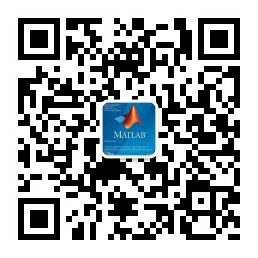- 写测试太烦?Copilot + Jest 让你 3 分钟搞定单元测试
网罗开发(小红书、快手、视频号同名) 大家好,我是展菲,目前在上市企业从事人工智能项目研发管理工作,平时热衷于分享各种编程领域的软硬技能知识以及前沿技术,包括iOS、前端、HarmonyOS、Java、Python等方向。在移动端开发、鸿蒙开发、物联网、嵌入式、云原生、开源等领域有深厚造诣。图书作者:《ESP32-C3物联网工程开发实战》图书作者:《SwiftUI入门,进阶与实战》超级个体:CO
- 安卓之ANR
巨蟹座的爱情
安卓
ANR是什么?怎么样避免ANR?安卓中,如果你的应用有一段时间响应不灵敏,系统会向用户显示一个对话框这个对话框称作应用程序无响应(Applicationnotresponding)对话框,用户可以选择让程序继续进行,但是,他们在使用你的程序时并不是每次都处理这个对话框。因此,在程序里对响应性能的设计很重要,这样,系统不会显示ARN给用户。Activity5秒broadc10秒耗时的操作workth
- Spring Boot多实例环境下保障数据一致性
KiddoStone
springboot后端java
在SpringBoot多实例环境下保障数据一致性需要结合分布式系统设计原则,以下是针对两个场景的设计与实现方案:1.多实例ScheduleJob的数据一致性问题场景多个实例同时执行定时任务,可能导致重复处理(如重复推送消息、重复扣款)。解决方案(1)分布式锁控制//使用Redisson实现分布式锁@Scheduled(cron="0*/5***?")publicvoidsyncDataJob(){
- 1. Linux 基本命令
GotoLevel
Linux编译基础linuxffmpeg运维
安装工具包:安装工具包:【1.brew;(MacOS);2.apt;(Linux-乌班图);3.yum;(Linux-服务器端)】brewsearchffmpeg:在服务源上查找显示ffmepg的安装包;brewinstallffmpeg:安装服务器上的ffmepg包;brewremoveffmpeg:移除安装的ffmepg包;Linux基本命令:ctrl+l:清屏;ctrl+c:取消当前命令;s
- android四大组件之一——Service
闲暇部落
四大组件ServiceIPCAIDLMessengerBinder
目录一、Service概述二、Service分类1.前台服务2.后台服务3.绑定服务三、Service的两种启动方式1.start启动模式2.bind绑定模式四、权限五、Service生命周期六、组件与绑定Service的通信方式1.扩展Binder类2.Messenger信使3.AIDL七、总结场景使用区别八、源码下载一、Service概述Service是应用组件,代表一个应用的长时间后台运行的
- 手把手教你入门vue+springboot开发(九)--springboot后端实现与postman调试
段鸿潭
javavue.jsspringbootpostman
文章目录前言一、后端代码实现1.实现pojo/User.java2.实现mapper/UserMapper.java3.实现service/UserService.java4.实现service/UserServiceImpl.java5.实现controller/UserController.java二、postman调试总结前言上篇我们已经定义好了数据库表users和用户管理功能的HTTP接口
- 60天python训练营打卡day46
学习目标:60天python训练营打卡学习内容:DAY46通道注意力(SE注意力)知识点回顾:1.不同CNN层的特征图:不同通道的特征图2.什么是注意力:注意力家族,类似于动物园,都是不同的模块,好不好试了才知道。3.通道注意力:模型的定义和插入的位置4.通道注意力后的特征图和热力图学习时间:2025.06.29@浙大疏锦行
- 安卓audio之Remote_Submix
盼雨落,等风起
安卓audio安卓
参考文档:Audio-内录实现原理(上)Audio-内录实现原理(下)一、实现原理REMOTE_SUBMIX是Android系统提供的内录(InternalAudioCapture)方案,用于捕获设备音频输出(如扬声器播放的声音)而非麦克风输入。其核心机制如下:HAL层数据流转音频数据不写入物理设备,而是由HAL层(audio.r_submix.default.so)开辟独立缓冲区,实现软件级混音
- android 音量调整
盼雨落,等风起
安卓audio音视频
1流程图2audio_policy_volumes.xml阐述了流跟device的音量范围【AndroidAudio】5、EngineBase加载音量曲线和策略【基于AndroidQ】1.按键处理1.1从输入子系统到音频子系统的处理按键会从inputReader的getEvent到inputDisptacher最后到ViewRootimpl中的ViewPostImeInputStage::proc
- audio的Framework层到hal 如何调用(以setparameters为例)
盼雨落,等风起
audio安卓
首先查看AudioManager之setParameters从应用到hal流程分析android6.0看到最后两个格:audio_hw_device_t->set_parameters()是上层调用hal层的接口导致下层***audio_hw->adev_set_parameters()***执行。他们之间的联系,通过legacy_adev_open建立联系。legacy_adev_open是干什
- 安卓之service常用用法详解
安卓一直是半吊子水平,在写一个小东西时,发现自己对service的理解还不够,特总结如下:service的创建publicclassMinaServiceextendsService{privateConnectionThreadthread;@OverridepublicvoidonCreate(){super.onCreate();thread=newConnectionThread("min
- 安卓之Service详解(三)【安卓IPC之AIDL】
AB小站
AndroidbindService安卓服务IPC和AIDL
AndroidBoundService详解1.一般实现步骤讲解在客户端(Activity中)要完成:1.客户端通过BindService()方法来绑定一个服务对象(业务对象)如绑定成功会回调ServiceConnection接口方法onServiceConnected()2.OnServiceConnection()方法的其中一个参数是在Service中OnBind()返回的Binder的实例。3
- Mybatis
微风粼粼
mybatistomcatjava
1、概述什么是mybatis?MyBatis是一个基于Java的持久层框架,它支持定制化SQL、存储过程以及高级映射。MyBatis消除了几乎所有的JDBC代码和参数的手动设置以及结果集的检索。MyBatis使用简单的XML或注解用于配置和原始映射,将接口和Java的POJOs(PlainOrdinaryJavaObjects,普通的Java对象)映射成数据库中的记录。它是一款半自动的ORM持久层
- trae的使用
trae的使用下载地址:https://www.trae.com.cn/home直接在官网下载安装即可可以从VScode和cursor当中导入配置(插件·设置·快捷键等等)需要登陆后才能正常使用(国内版本的可以通过手机号登录)登录打开后的页面:左边大框架可以在本软件里打开文件或是克隆github的项目到本地右边是选择trae的模式:有两种:chat和Builderchat模式和Builder模式下
- 基于物联网的城市低洼地段水深报警系统设计
标题:基于物联网的城市低洼地段水深报警系统设计内容:1.摘要本文针对城市低洼地段在暴雨等天气下易积水,可能危及行人安全和造成车辆损坏等问题,设计了基于物联网的城市低洼地段水深报警系统。采用水位传感器实时监测低洼地段的水深数据,通过物联网通信模块将数据传输至云平台。在云平台上对数据进行分析处理,当水深超过预设阈值时,系统自动触发报警,通过短信、APP推送等方式通知相关人员。经过实际测试,该系统的水位
- Mysql报错
微风粼粼
mysqladbandroid
1.权限问题MySQL认证协议不兼容问题解决方案这个错误表明您的MySQL客户端与服务器要求的认证协议不兼容,通常发生在MySQL8.0+服务器与旧版客户端之间。nestedexceptionisorg.apache.ibatis.exceptions.PersistenceException:Errorqueryingdatabase.Cause:org.springframework.jdbc
- 容器革命:Docker 技术深度解析与未来趋势
小红花大酒店
Docker技术探秘docker容器运维
容器革命:Docker技术深度解析与未来趋势一、容器化技术的颠覆性价值在云计算与微服务架构蓬勃发展的今天,Docker作为容器化技术的代表,正深刻改变着软件交付的范式。传统虚拟机(VM)需要为每个应用实例配备完整的操作系统,导致资源浪费和启动延迟(分钟级)。而Docker通过操作系统级虚拟化,将应用及其依赖打包成轻量级容器,实现了秒级启动和MB级资源占用。这种技术突破使得开发团队能够以标准化方式构
- 2025 API 开发管理工具 Apipost 与 Apifox 全维度对比
在当今数字化转型的浪潮下,API开发与管理对于各类项目的成功实施至关重要。Apipost和Apifox两款API开发管理工具,各自有着独特的功能特性。本文将从多个维度对它们进行深入对比,为研发、测试人员提供全面的参考。一、API设计在大型企业级项目中,API设计的复杂性和定制性要求极高。以金融行业为例,不同法人行的业务规则差异巨大,从账户管理到交易处理,每个环节都需要精确且个性化的API设计。Ap
- Golang基础笔记九之方法与接口
后端go方法接口类型判断
本文首发于公众号:Hunter后端原文链接:Golang基础笔记九之方法与接口本篇笔记介绍Golang里方法和接口,以下是本篇笔记目录:方法接口用结构体实现类的功能1、方法首先介绍一下方法。方法是与特定类型关联的函数,我们在实现一个函数前,绑定一个类型,就实现了这个类型的方法。比如我们想实现一个结构体的方法,可以如下操作:typePersonstruct{ Namestring Age int
- 如何在YashanDB中使用SQL实现复杂查询
数据库
在当今的数据驱动环境中,数据库查询性能至关重要,尤其是复杂查询的实现与优化。复杂查询通常涉及多表连接、聚集计算或者子查询,相对于简单查询,更高的计算要求极大地影响了执行速度。因此,了解如何在YashanDB中高效地实现复杂查询,不仅可以优化应用的性能,还能提升整体的数据处理效率。复杂查询的实现方法多表关联查询在YashanDB中,多表关联查询是复杂查询中最常用的形式之一。通过使用INNERJOIN
- 如何在YashanDB中实现自动化备份?
数据库
引言在现代数据库管理系统中,数据的安全性和可恢复性越来越受到重视。尤其是在数据可能因人为失误、硬件故障或网络问题而丢失的情况下,自动化备份解决方案显得尤为重要。YashanDB作为一款高性能的关系型数据库,支持多种备份策略以确保数据的安全性和一致性。本文将深入探讨YashanDB的备份机制、支持的备份类型及如何实现自动化备份策略的具体步骤,旨在帮助数据库管理员和技术人员有效管理其数据备份工作。Ya
- 如何在YashanDB中实现数据分区管理
数据库
在现代数据库系统中,随着数据量的持续增长以及业务需求的不断演变,如何高效、灵活地管理数据成为了重要的技术挑战。数据分区管理作为应对大规模数据存储的有效策略,能够显著提升数据库的性能和可管理性。数据分区技术通过将大型表拆分成smallermanageableunits(即分区),为查询、更新和维护提供了更高效的操作机制。本文将深入探讨如何在YashanDB数据库中实现有效的数据分区管理。分区管理的核
- 如何在YashanDB中实现数据趋势预测
数据库
数据趋势预测已成为数据驱动决策中的一个重要方面。在面临海量数据时,如何精确而高效地提取潜在趋势,对于企业的战略规划具有重要意义。YashanDB作为一款高性能的数据库产品,提供多种存储和查询优化功能,使得实现数据趋势预测成为可能。特别是在数据存储结构和多版本并发控制(MVCC)等特性下,趋势预测的场景应用可以得到有效支持。数据分析基础在进行数据趋势预测之前,首先必须了解基础的数据分析过程。Yash
- 如何在YashanDB中实现与区块链的集成
数据库
在当前的数字化时代,数据的安全性和完整性至关重要。随着区块链技术的兴起,企业对于如何将这项新兴技术与传统数据库(如YashanDB)相结合,已成为一个亟待解决的问题。区块链提供的数据不可篡改性使其成为加密金融、供应链管理以及智能合约等领域的重要组件。因此,如何实现YashanDB与区块链的无缝集成,便成为技术团队的重要任务。核心技术点YashanDB的事务和一致性管理YashanDB支持事务的AC
- python规划
t_hj
python
-----------动态内容与反爬策略----------动态页面处理Selenium:自动化浏览器(点击、滚动、表单提交)Playwright(更现代的替代方案)API逆向工程分析Ajax请求(ChromeDevTools)直接调用API接口(如知乎热榜API)反爬应对User-Agent轮换、IP代理(免费/付费代理池)验证码处理(简单验证码用OCR,复杂验证码需打码平台)请求频率控制(ti
- 一、Docker:一场颠覆应用部署与运维的容器革命
IvanCodes
Docker教程docker容器
作者:IvanCodes日期:2025年7月3日专栏:Docker教程在现代软件开发的世界里,Docker已经从一个新奇的工具演变成了一项基础性技术。它彻底改变了我们构建、打包、分发和运行应用程序的方式。无论你是开发者、运维工程师还是技术爱好者,理解Docker都是一项不可或缺的技能。本文将带你回顾Docker的发展历史,探索它能解决的实际问题,并清晰地解析其核心名词概念。一、Docker的“前世
- Python 训练营打卡 Day 46
2401_86382089
Python打卡python
通道注意力一、什么是注意力注意力机制是一种让模型学会「选择性关注重要信息」的特征提取器,就像人类视觉会自动忽略背景,聚焦于图片中的主体(如猫、汽车)。transformer中的叫做自注意力机制,他是一种自己学习自己的机制,他可以自动学习到图片中的主体,并忽略背景。我们现在说的很多模块,比如通道注意力、空间注意力、通道注意力等等,都是基于自注意力机制的。从数学角度看,注意力机制是对输入特征进行加权求
- 基于springboot的社区生鲜团购系统
优创学社2
springboot后端java
目录摘要IAbstractII1绪论11.1研究背景11.2课题意义22开发技术论述22.1Springboot框架32.2Vue框架32.3Tomcat服务器42.4MySQL数据库53需求分析63.1系统的可行性分析73.2功能需求分析73.3项目设计目标83.3.1关于系统的基本要求83.3.2开发目标94系统设计104.1系统功能模块设计114.2系统功能流程设计124.3数据库设计134
- 如何在YashanDB中实施高效的存储管理?
数据库
引言在现代数据库管理系统中,存储管理是至关重要的组成部分。它不仅影响数据的读取和写入速度,还直接关系到系统资源的利用率和整体性能。在YashanDB中,有效的存储管理能够显著提高数据库的性能和可用性。本文将深入探讨YashanDB的存储结构和管理机制,提供实用的技术分析和建议,以实现高效的存储管理。YashanDB的存储架构物理存储结构YashanDB的物理存储结构是对数据在底层磁盘上的存储方式进
- 如何在YashanDB中实施高效的数据清洗
数据库
在现代数据管理中,高效的数据清洗已经成为确保数据质量和一致性的关键步骤。在面对大量数据的处理时,数据库系统常常遭遇性能瓶颈和数据一致性问题,尤其是在大规模应用场景中。YashanDB作为一个灵活的数据库解决方案,提供了多种功能强大的数据清洗工具,能够有效提升数据处理效率,帮助用户更好地维护和使用数据。本文旨在探讨如何在YashanDB中实施高效的数据清洗,涵盖核心技术、最佳实践以及具体实施建议。核
- jquery实现的jsonp掉java后台
知了ing
javajsonpjquery
什么是JSONP?
先说说JSONP是怎么产生的:
其实网上关于JSONP的讲解有很多,但却千篇一律,而且云里雾里,对于很多刚接触的人来讲理解起来有些困难,小可不才,试着用自己的方式来阐释一下这个问题,看看是否有帮助。
1、一个众所周知的问题,Ajax直接请求普通文件存在跨域无权限访问的问题,甭管你是静态页面、动态网页、web服务、WCF,只要是跨域请求,一律不准;
2、
- Struts2学习笔记
caoyong
struts2
SSH : Spring + Struts2 + Hibernate
三层架构(表示层,业务逻辑层,数据访问层) MVC模式 (Model View Controller)
分层原则:单向依赖,接口耦合
1、Struts2 = Struts + Webwork
2、搭建struts2开发环境
a>、到www.apac
- SpringMVC学习之后台往前台传值方法
满城风雨近重阳
springMVC
springMVC控制器往前台传值的方法有以下几种:
1.ModelAndView
通过往ModelAndView中存放viewName:目标地址和attribute参数来实现传参:
ModelAndView mv=new ModelAndView();
mv.setViewName="success
- WebService存在的必要性?
一炮送你回车库
webservice
做Java的经常在选择Webservice框架上徘徊很久,Axis Xfire Axis2 CXF ,他们只有一个功能,发布HTTP服务然后用XML做数据传输。
是的,他们就做了两个功能,发布一个http服务让客户端或者浏览器连接,接收xml参数并发送xml结果。
当在不同的平台间传输数据时,就需要一个都能解析的数据格式。
但是为什么要使用xml呢?不能使json或者其他通用数据
- js年份下拉框
3213213333332132
java web ee
<div id="divValue">test...</div>测试
//年份
<select id="year"></select>
<script type="text/javascript">
window.onload =
- 简单链式调用的实现技术
归来朝歌
方法调用链式反应编程思想
在编程中,我们可以经常遇到这样一种场景:一个实例不断调用它自身的方法,像一条链条一样进行调用
这样的调用你可能在Ajax中,在页面中添加标签:
$("<p>").append($("<span>").text(list[i].name)).appendTo("#result");
也可能在HQ
- JAVA调用.net 发布的webservice 接口
darkranger
webservice
/**
* @Title: callInvoke
* @Description: TODO(调用接口公共方法)
* @param @param url 地址
* @param @param method 方法
* @param @param pama 参数
* @param @return
* @param @throws BusinessException
- Javascript模糊查找 | 第一章 循环不能不重视。
aijuans
Way
最近受我的朋友委托用js+HTML做一个像手册一样的程序,里面要有可展开的大纲,模糊查找等功能。我这个人说实在的懒,本来是不愿意的,但想起了父亲以前教我要给朋友搞好关系,再加上这也可以巩固自己的js技术,于是就开始开发这个程序,没想到却出了点小问题,我做的查找只能绝对查找。具体的js代码如下:
function search(){
var arr=new Array("my
- 狼和羊,该怎么抉择
atongyeye
工作
狼和羊,该怎么抉择
在做一个链家的小项目,只有我和另外一个同事两个人负责,各负责一部分接口,我的接口写完,并全部测联调试通过。所以工作就剩下一下细枝末节的,工作就轻松很多。每天会帮另一个同事测试一些功能点,协助他完成一些业务型不强的工作。
今天早上到公司没多久,领导就在QQ上给我发信息,让我多协助同事测试,让我积极主动些,有点责任心等等,我听了这话,心里面立马凉半截,首先一个领导轻易说
- 读取android系统的联系人拨号
百合不是茶
androidsqlite数据库内容提供者系统服务的使用
联系人的姓名和号码是保存在不同的表中,不要一下子把号码查询来,我开始就是把姓名和电话同时查询出来的,导致系统非常的慢
关键代码:
1, 使用javabean操作存储读取到的数据
package com.example.bean;
/**
*
* @author Admini
- ORACLE自定义异常
bijian1013
数据库自定义异常
实例:
CREATE OR REPLACE PROCEDURE test_Exception
(
ParameterA IN varchar2,
ParameterB IN varchar2,
ErrorCode OUT varchar2 --返回值,错误编码
)
AS
/*以下是一些变量的定义*/
V1 NUMBER;
V2 nvarc
- 查看端号使用情况
征客丶
windows
一、查看端口
在windows命令行窗口下执行:
>netstat -aon|findstr "8080"
显示结果:
TCP 127.0.0.1:80 0.0.0.0:0 &
- 【Spark二十】运行Spark Streaming的NetworkWordCount实例
bit1129
wordcount
Spark Streaming简介
NetworkWordCount代码
/*
* Licensed to the Apache Software Foundation (ASF) under one or more
* contributor license agreements. See the NOTICE file distributed with
- Struts2 与 SpringMVC的比较
BlueSkator
struts2spring mvc
1. 机制:spring mvc的入口是servlet,而struts2是filter,这样就导致了二者的机制不同。 2. 性能:spring会稍微比struts快。spring mvc是基于方法的设计,而sturts是基于类,每次发一次请求都会实例一个action,每个action都会被注入属性,而spring基于方法,粒度更细,但要小心把握像在servlet控制数据一样。spring
- Hibernate在更新时,是可以不用session的update方法的(转帖)
BreakingBad
Hibernateupdate
地址:http://blog.csdn.net/plpblue/article/details/9304459
public void synDevNameWithItil()
{Session session = null;Transaction tr = null;try{session = HibernateUtil.getSession();tr = session.beginTran
- 读《研磨设计模式》-代码笔记-观察者模式
bylijinnan
java设计模式
声明: 本文只为方便我个人查阅和理解,详细的分析以及源代码请移步 原作者的博客http://chjavach.iteye.com/
import java.util.ArrayList;
import java.util.List;
import java.util.Observable;
import java.util.Observer;
/**
* “观
- 重置MySQL密码
chenhbc
mysql重置密码忘记密码
如果你也像我这么健忘,把MySQL的密码搞忘记了,经过下面几个步骤就可以重置了(以Windows为例,Linux/Unix类似):
1、关闭MySQL服务
2、打开CMD,进入MySQL安装目录的bin目录下,以跳过权限检查的方式启动MySQL
mysqld --skip-grant-tables
3、新开一个CMD窗口,进入MySQL
mysql -uroot
- 再谈系统论,控制论和信息论
comsci
设计模式生物能源企业应用领域模型
再谈系统论,控制论和信息论
偶然看
- oracle moving window size与 AWR retention period关系
daizj
oracle
转自: http://tomszrp.itpub.net/post/11835/494147
晚上在做11gR1的一个awrrpt报告时,顺便想调整一下AWR snapshot的保留时间,结果遇到了ORA-13541这样的错误.下面是这个问题的发生和解决过程.
SQL> select * from v$version;
BANNER
-------------------
- Python版B树
dieslrae
python
话说以前的树都用java写的,最近发现python有点生疏了,于是用python写了个B树实现,B树在索引领域用得还是蛮多了,如果没记错mysql的默认索引好像就是B树...
首先是数据实体对象,很简单,只存放key,value
class Entity(object):
'''数据实体'''
def __init__(self,key,value)
- C语言冒泡排序
dcj3sjt126com
算法
代码示例:
# include <stdio.h>
//冒泡排序
void sort(int * a, int len)
{
int i, j, t;
for (i=0; i<len-1; i++)
{
for (j=0; j<len-1-i; j++)
{
if (a[j] > a[j+1]) // >表示升序
- 自定义导航栏样式
dcj3sjt126com
自定义
-(void)setupAppAppearance
{
[[UILabel appearance] setFont:[UIFont fontWithName:@"FZLTHK—GBK1-0" size:20]];
[UIButton appearance].titleLabel.font =[UIFont fontWithName:@"FZLTH
- 11.性能优化-优化-JVM参数总结
frank1234
jvm参数性能优化
1.堆
-Xms --初始堆大小
-Xmx --最大堆大小
-Xmn --新生代大小
-Xss --线程栈大小
-XX:PermSize --永久代初始大小
-XX:MaxPermSize --永久代最大值
-XX:SurvivorRatio --新生代和suvivor比例,默认为8
-XX:TargetSurvivorRatio --survivor可使用
- nginx日志分割 for linux
HarborChung
nginxlinux脚本
nginx日志分割 for linux 默认情况下,nginx是不分割访问日志的,久而久之,网站的日志文件将会越来越大,占用空间不说,如果有问题要查看网站的日志的话,庞大的文件也将很难打开,于是便有了下面的脚本 使用方法,先将以下脚本保存为 cutlog.sh,放在/root 目录下,然后给予此脚本执行的权限
复制代码代码如下:
chmo
- Spring4新特性——泛型限定式依赖注入
jinnianshilongnian
springspring4泛型式依赖注入
Spring4新特性——泛型限定式依赖注入
Spring4新特性——核心容器的其他改进
Spring4新特性——Web开发的增强
Spring4新特性——集成Bean Validation 1.1(JSR-349)到SpringMVC
Spring4新特性——Groovy Bean定义DSL
Spring4新特性——更好的Java泛型操作API
Spring4新
- centOS安装GCC和G++
liuxihope
centosgcc
Centos支持yum安装,安装软件一般格式为yum install .......,注意安装时要先成为root用户。
按照这个思路,我想安装过程如下:
安装gcc:yum install gcc
安装g++: yum install g++
实际操作过程发现,只能有gcc安装成功,而g++安装失败,提示g++ command not found。上网查了一下,正确安装应该
- 第13章 Ajax进阶(上)
onestopweb
Ajax
index.html
<!DOCTYPE html PUBLIC "-//W3C//DTD XHTML 1.0 Transitional//EN" "http://www.w3.org/TR/xhtml1/DTD/xhtml1-transitional.dtd">
<html xmlns="http://www.w3.org/
- How to determine BusinessObjects service pack and fix pack
blueoxygen
BO
http://bukhantsov.org/2011/08/how-to-determine-businessobjects-service-pack-and-fix-pack/
The table below is helpful. Reference
BOE XI 3.x
12.0.0.
y BOE XI 3.0 12.0.
x.
y BO
- Oracle里的自增字段设置
tomcat_oracle
oracle
大家都知道吧,这很坑,尤其是用惯了mysql里的自增字段设置,结果oracle里面没有的。oh,no 我用的是12c版本的,它有一个新特性,可以这样设置自增序列,在创建表是,把id设置为自增序列
create table t
(
id number generated by default as identity (start with 1 increment b
- Spring Security(01)——初体验
yang_winnie
springSecurity
Spring Security(01)——初体验
博客分类: spring Security
Spring Security入门安全认证
首先我们为Spring Security专门建立一个Spring的配置文件,该文件就专门用来作为Spring Security的配置

